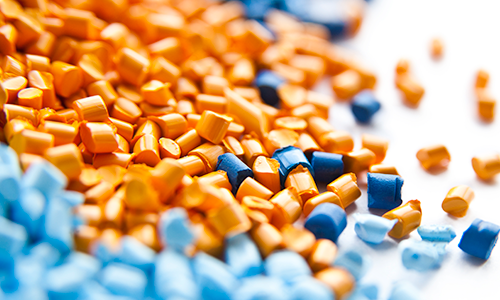3 Time-Saving Techniques for Your Polymer Research
Kim Anderson | Alina Latshaw | Neil Demarse | Morgan Ulrich
February 28, 2023
Saving time in polymer research has many benefits and can be realized in different ways, from reducing operator training time to increasing research throughput and achieving accurate and reproducible results. Here are 3 opportunities across 3 techniques (rheology, TGA, and DSC) which offer solutions to save time in your polymer research.

1. Implement auto-trim technology in rheology workflows
Polymer melt rheology can be used to fingerprint molecular architecture, which can affect quality of processing, such as during extrusion and molding parts. Depending on the manufacturing process, a material may experience a wide range of temperatures and processing speeds, under various periods of time, so it is critical to predict the polymer melt behavior early on to optimize processing conditions. Optimization steps may involve holding polymers at isothermal conditions for specific periods of time or increasing the temperature to improve flowability into molds.
A common setup for polymer melt rheology is the parallel plate geometry. Unlike a cone geometry, which is often used when testing low viscosity materials such as oils and liquids, the velocity gradient within the sample is greatest at the exterior edge. This means that the signal (torque) measured by the instrument and data is mostly representative of this edge. To achieve accurate and reproducible results, it is important for the user to consistently remove excess sample, called ‘trimming’, to prevent edge effects.
Auto-trim technology removes many sources of variation related to user error and multi-user inconsistencies. It can be used to improve consistency, repeatability, and accuracy of measurements up to 5x, while increasing walkaway time by 80%, and reducing new operator training time to less than 30 minutes.
Read the tech brief – Polymer Melt Rheology Workflow Automation: Auto-Trim for Rheometers
2. Test polymer lifetime with TGA as an alternative to oven aging
ANSI/ASTM procedure D-2307 is a commonly used test for estimating wire insulation lifetime. In this procedure, twisted pairs of insulated wire are oven aged (for up to 50 days) at elevated temperatures (up to 240 °C) until voltage breakdown occurs.
This procedure, while useful, is very time consuming, and can take several months for highly stable materials. As the stability of polymeric electrical insulation materials increases with the introduction of new products, the time needed for a full series of tests becomes excessive.
Thermogravimetric Analysis (TGA), which monitors weight changes in a material as temperature changes, offers a viable alternative to oven aging. The total time to evaluate a material is less than one day, and with an automated TGA, the actual operator time is even lower with overnight evaluation being possible.
Read the complete study – Estimation of Polymer Lifetime by TGA Decomposition Kinetics
3. Simultaneously analyze semi-crystalline PET thermoplastics
Differential scanning calorimeter (DSC) technology is a key tool in understanding thermal properties and morphology of a material. Polyethylene terephthalate (PET) is an example of a ubiquitous semi-crystalline thermoplastic polymer. One of the key factors which affects the mechanical properties of PET products is percent crystallinity, which can be controlled by thermal processing conditions.
A simultaneous study of semi-crystalline thermoplastic samples under identical conditions allows for the results to be directly compared against each other. As a result, the data highlight the differences in thermal properties as a function of thermal history by eliminating any contributions from differences in test conditions. Running samples in parallel offers the potential to increase research throughput, decrease run times, and improve the overall efficiency of a lab.
Read the complete study – Semi-Crystalline Thermoplastic Analysis using an X3 DSC
For more information or to submit a product inquiry, please visit our contact page.
Other Resources
- Application Note – Polymer Melt Rheology Workflow Automation: Auto-Trim for Rheometers
- Application Note – Estimation of Polymer Lifetime by TGA Decomposition Kinetics
- Application Note – Semi-Crystalline Thermoplastic Analysis using an X3 DSC
- Product: Auto-Trim Accessory
- Technique – Rheology
- Application – Polymers







